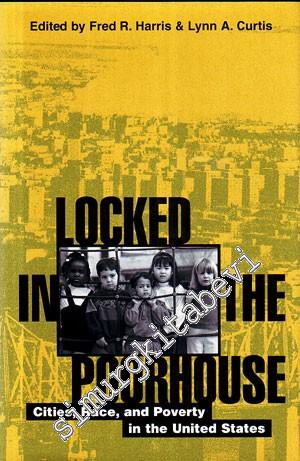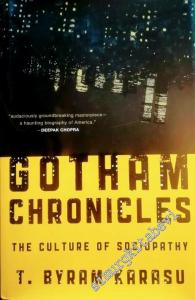1199108411
494156

https://www.simurgkitabevi.com/locked-in-the-poorhouse-cities-race-and-poverty-in-the-united-states
Locked in the Poorhouse : Cities, Race and Poverty in the United States - #smrgSAHAF
0.00
hirty years ago we had riots in the city streets. Then-President Johnson convened the Kerner Commission to examine the reasons why, and it concluded that the U.S. was 'moving towards two societies, one black, one white, separate and unequal.' Today, the city streets are populated more variously and suffering more quietly, but more people in U.S. cities are poorer now than ever before. As this book shows, U.S. cities are becoming poorhouses for blacks and Hispanics, and city life incubates hopelessness borne of un- and underemployment, criminal victimization, and racial discrimination, especially against nonwhite males. In an update of the original Kerner Commission report, the high profile authors represented here say they know what works and what doesn't in solving the problems of minorities in the city. To close what has been called 'the millennium breach' between and among the races, we as a society must re-commit ourselves to basic principles and public and private programs geared toward more and better jobs, employment training, early childhood education and quality care, inner city economic development, and crime and drug prevention, among other priorities so essential to improving the quality of life for all in American cities. Editorial Reviews Review In the aftermath of urban disorders in scores of U.S. cities between 1965 and 1967, President Johnson convened the National Advisory Commission on Civil Disorders, commonly known as the Kerner Commission. . . . Locked in the Poorhouse is an assessment of what has happened in the ensuing three decades. Contributors, many of them well-known and respected scholars, show that the conditions that gave rise to the riots of the 1960s have grown worse. . . . Several of the contributors point to the indifference and inaction of the federal government in furthering these destructive trends. The final chapter by Lynn A. Curtis contains a series of intelligent recommendations on how to reverse course, along with a discussion of obstacles that must be overcome and how to fund the programs and policies he recommends.
hirty years ago we had riots in the city streets. Then-President Johnson convened the Kerner Commission to examine the reasons why, and it concluded that the U.S. was 'moving towards two societies, one black, one white, separate and unequal.' Today, the city streets are populated more variously and suffering more quietly, but more people in U.S. cities are poorer now than ever before. As this book shows, U.S. cities are becoming poorhouses for blacks and Hispanics, and city life incubates hopelessness borne of un- and underemployment, criminal victimization, and racial discrimination, especially against nonwhite males. In an update of the original Kerner Commission report, the high profile authors represented here say they know what works and what doesn't in solving the problems of minorities in the city. To close what has been called 'the millennium breach' between and among the races, we as a society must re-commit ourselves to basic principles and public and private programs geared toward more and better jobs, employment training, early childhood education and quality care, inner city economic development, and crime and drug prevention, among other priorities so essential to improving the quality of life for all in American cities. Editorial Reviews Review In the aftermath of urban disorders in scores of U.S. cities between 1965 and 1967, President Johnson convened the National Advisory Commission on Civil Disorders, commonly known as the Kerner Commission. . . . Locked in the Poorhouse is an assessment of what has happened in the ensuing three decades. Contributors, many of them well-known and respected scholars, show that the conditions that gave rise to the riots of the 1960s have grown worse. . . . Several of the contributors point to the indifference and inaction of the federal government in furthering these destructive trends. The final chapter by Lynn A. Curtis contains a series of intelligent recommendations on how to reverse course, along with a discussion of obstacles that must be overcome and how to fund the programs and policies he recommends.
Yorum yaz
Bu kitabı henüz kimse eleştirmemiş.











